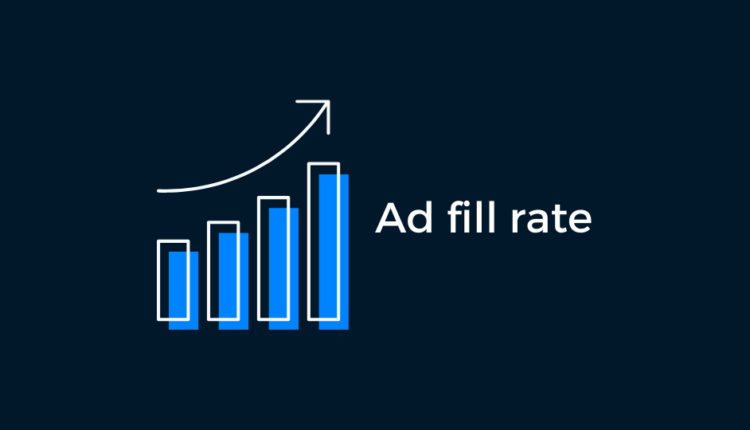In the world of online advertising, one important concept that advertisers and publishers often discuss is the “ad fill rate.” This term is crucial for anyone involved in digital marketing, as it can directly impact revenue and campaign success. In this article, we will break down what ad fill rate is, how it works, and why it is important.
What is Ad Fill Rate?
Ad fill rate refers to the percentage of ad requests that are successfully filled with ads. In simpler terms, it measures how many times an ad space on a website or app is filled with an actual advertisement compared to how many times an ad space was available for display.
For example, if a website receives 1,000 requests for ads but only fills 700 of those with actual ads, the ad fill rate would be 70%. This metric helps advertisers as well as publishers understand how effectively they are monetizing their ad spaces.
How is Ad Fill Rate Calculated?
Calculating the ad fill rate is straightforward. The formula is:
Advertisement Fill Rate = (Number of Filled Ad Requests/Total Ad Requests) x 100
Using the earlier example, if a site has 700 filled ad requests out of 1,000 total requests, the calculation would be:
Advertisement Fill Rate = (700/1000) x 100 = 70%
This percentage can provide insights into how well an ad inventory is performing.
Why is Ad Fill Rate Important?
1. Revenue Generation
One of the primary reasons advertisement fill rate is important is its direct impact on revenue. A higher fill rate means more ads are being displayed, which typically leads to higher earnings for publishers. If a website consistently has a low fill rate, it may not be maximizing its potential revenue from advertising.
2. Understanding Demand
The advertisement fill rate can also indicate the demand for ads space. A high fill rate suggests that there is strong demand for advertising, while a low fill rate may indicate that advertisers are not interested in the available inventory. This information can be crucial for publishers when deciding how to price their ad spaces or which advertisers to target.
3. Campaign Effectiveness
For advertisers, understanding the fill rate can help evaluate the effectiveness of their campaigns. If a campaign is not filling ads as expected, it may require adjustments, such as targeting different audiences or using different ad formats.
Factors Affecting Ad Fill Rate
Several factors can influence advertisement fill rate, including:
1. Quality of Inventory
High-quality ad inventory often attracts more advertisers. If a publisher has a well-targeted audience and quality content, they are likely to see higher fill rates.
2. Seasonality
Certain times of the year, such as holidays or major events, can affect ad fill rates. Advertisers may increase their budgets during these peak times, resulting in higher fill rates.
3. Competition
The level of competition in a particular niche can also impact fill rates. More advertisers competing for the same ad space can lead to higher fill rates.
4. Ad Formats
Different ad formats may have varying fill rates. For instance, display ads may have different fill rates compared to video ads. Publishers should analyze which formats work best for their audience.
Improving Ad Fill Rate
If you find that your advertisement fill rate is lower than desired, there are several strategies to improve it:
1. Diversify Ad Networks
Working with multiple ad networks can indeed help increase fill rates. Different networks may have varying advertisers, which can further improve the chances of filling ad spaces.
2. Optimize Ad Placement
Experimenting with ad placements on your site can help identify which locations yield higher fill rates. Ads placed in high-visibility areas may perform better.
3. Analyze Audience Data
Understanding your audience’s preferences and behaviors can help attract more relevant advertisers. Use analytics tools to gather insights about your audience and adjust your ad strategy accordingly.
4. Monitor Performance
Regularly monitor your fill rates and other key performance indicators. This can help you identify trends and further make informed decisions about your advertising strategy.
Conclusion

Ad fill rate is indeed a vital metric in the online advertising landscape. By understanding what it is, how it is calculated, and its importance, both publishers and advertisers can make better decisions to maximize their revenue and campaign effectiveness. By focusing on factors that influence fill rates and employing strategies for improvement, stakeholders in digital marketing can indeed achieve greater success in their advertising efforts.
Frequently Asked Questions (FAQs)
1. What is a good ad fill rate?
A good advertisement fill rate typically ranges from 70% to 90%, but it can vary based on industry and advertisement formats.
2. How can I check mine?
You can check yours through your ad network’s dashboard as well as by using analytics tools, which usually provide performance metrics.
3. What factors can lower it?
Factors include low-quality inventory, insufficient demand from advertisers, seasonality, and also ad placement issues on your site.
4. Can a low advertisement fill rate affect my revenue?
Yes, a low ad fill rate means fewer ads are displayed, which can further lead to decreased advertising revenue for publishers.


